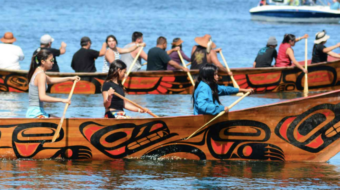
Secretary of the Interior Ken Salazar announced Oct. 9 that his department had approved the Chokecherry and Sierra Madre Wind Project, a proposed wind farm in Wyoming that could generate as much as 3,000 megawatts of power for the state. Expected to be the largest-ever wind project in the U.S., it will create an estimated 1,000 jobs, and generate enough electricity to energize nearly one million homes.
The 1,000-turbine wind farm is one of seven clean energy projects that are part of President Obama’s ‘We Can’t Wait’ initiative (announced on August 7), and an integral part of his effort to expand American-based energy. That initiative, authorized by presidential executive order, is focused on developing environmentally sound infrastructure projects.
“When President Obama took office,” said Salazar, “he made expanding production of American energy a priority, including making our nation a world leader in harnessing renewable energy. Tapping the vast renewable energy resources on our nation’s public lands will create jobs while supporting a clean energy future.”
Road- and groundwork on the project (which will cover an approximate 230,000 acres of land) is expected to begin early next year, after initial environmental and construction-related analysis this year, to be overseen by the Bureau of Land Management. Wind turbines will be put up over a three-year period starting in 2013.
“Wyoming has some of the best wind energy resources in the world,” Salazar continued, “and there’s no doubt that the project has the potential to be a landmark example for the nation. President Obama challenged us in his State of the Union address to authorize 10,000 megawatts of renewable energy on public lands by the end of the year – enough to meet the needs of more than three million people.” And this project, Salazar confirmed, is the first step toward “making good on that [challenge].”
The wind facility will consist of the turbines, an internal haul road, an internal 230-kilovolt transmission line, and substations to connect the power to the electric grid. Prior to construction, however, steps will be taken to ensure the project is conscientious of the environment around it.
“The Bureau of Land Management is committed to responsibly developing renewable energy on our country’s public lands,” BLM acting director Mike Pool remarked. “That includes an extensive environmental review and making sure that we’re mitigating the potential impacts of energy development on our wildlife and our lands.”
In cooperation with the U.S. Fish and Wildlife Service, the BLM will design an Aviation Protection Plan and an Eagle Conservation Plan, both of which will focus on avoiding and minimizing impacts to birds and bats, which have been injured or killed by wind turbines in the past when poor planning was involved.
Steps to ensure worker safety ought to also be taken, experts feel.
Meanwhile, negative impacts to historic and Native American resources will be avoided due to collaborative efforts with five federally recognized tribes, with whom the involved government departments will continue to consult throughout the life of the project.
“Our strategy is getting us within the grasp of energy independence in the United States,” Salazar explained. And, in addition, he added, “We know there are tens of thousands of jobs now being created by wind energy.”
The continuing pursuit of wind energy is seen as extremely significant, and offers just one of many reasons for activists to get out and vote for Obama.
Republican presidential candidate Mitt Romney has, like his GOP peers, expressed anti-wind energy sentiments often, and last week confirmed his position to let the wind power tax credit expire at the end of the year, arguing that wind projects don’t put enough money back into the economy to justify the expenses. But the jobs and local economic benefits that the Chokecherry and Sierra Madre project are expected to provide will directly contradict such a viewpoint.
Frances Beinecke, president of the Natural Resources Defense Council Action Fund, outlined the key difference between Obama and Romney on energy policy, noting, “President Obama wants to invest in energy efficiency and renewable power while protecting our health. Gov. Romney would bet our future on the fossil fuels of the past. This is a choice between responsibility and recklessness, and the choice is ours to make.”
“Wind energy is important for our nation’s economic health and security,” said Fish and Wildlife Service director Dan Ashe, “as well as the health of our environment.”
The facility and others like it, said BLM acting deputy director Neil Kornze, “are going to be landmarks in America. They are going to be what people think about when they think about the American West. And they are going to completely change the way that we think about energy production.”
Photo: Talon Kasmai // CC 2.0










